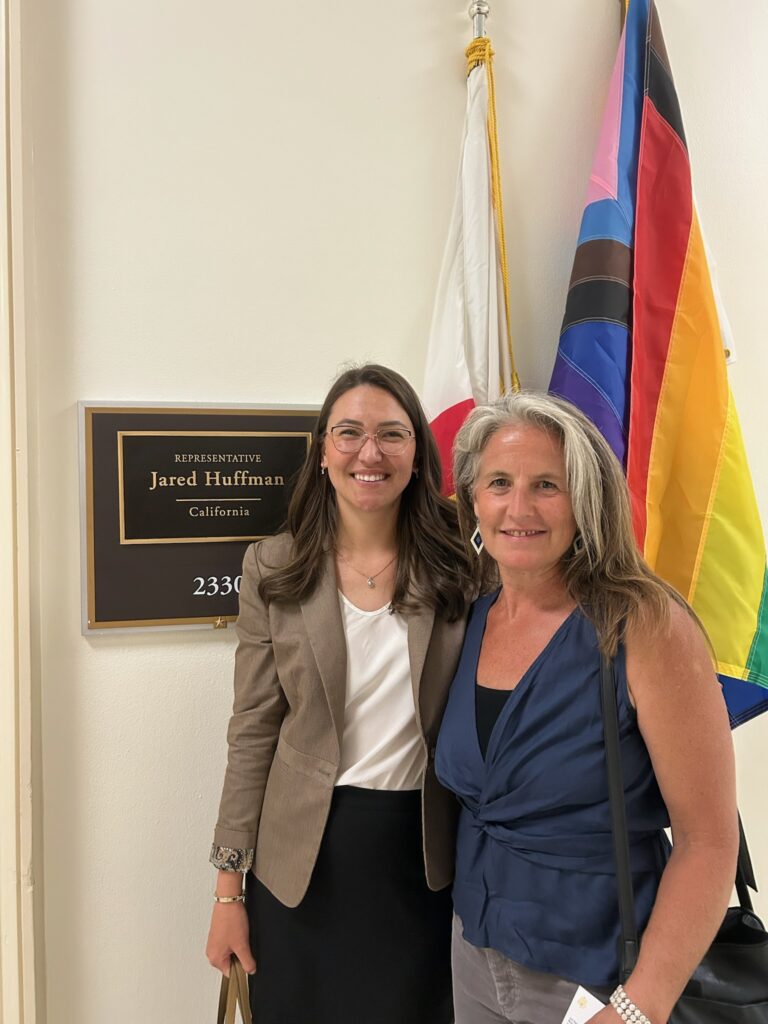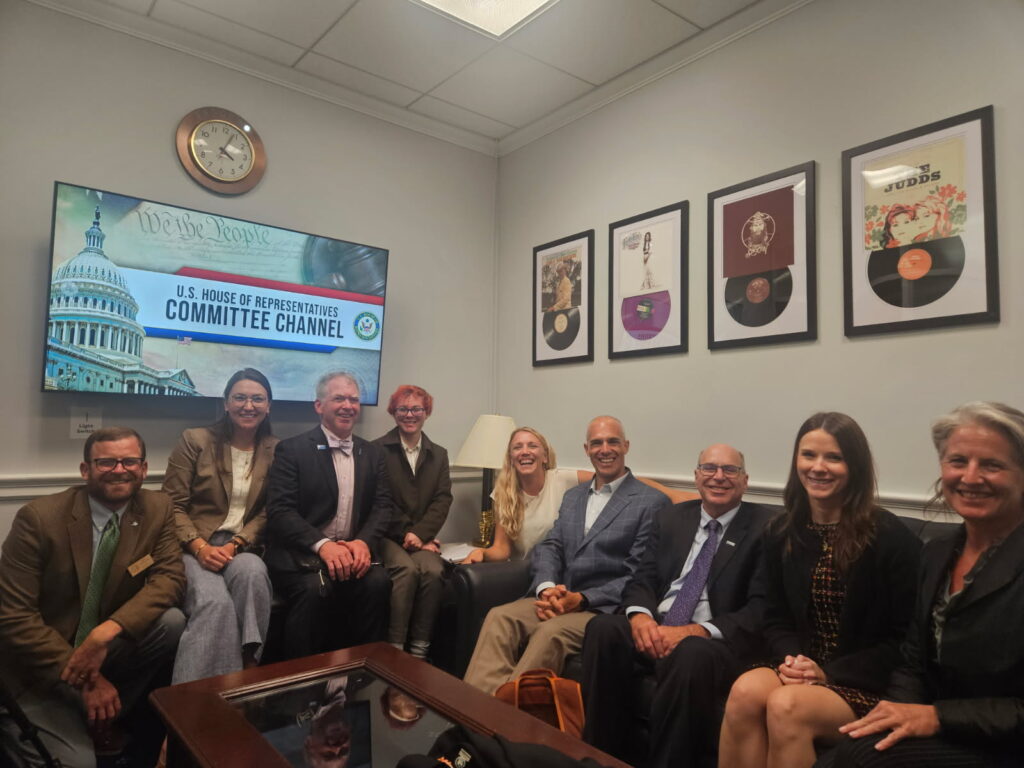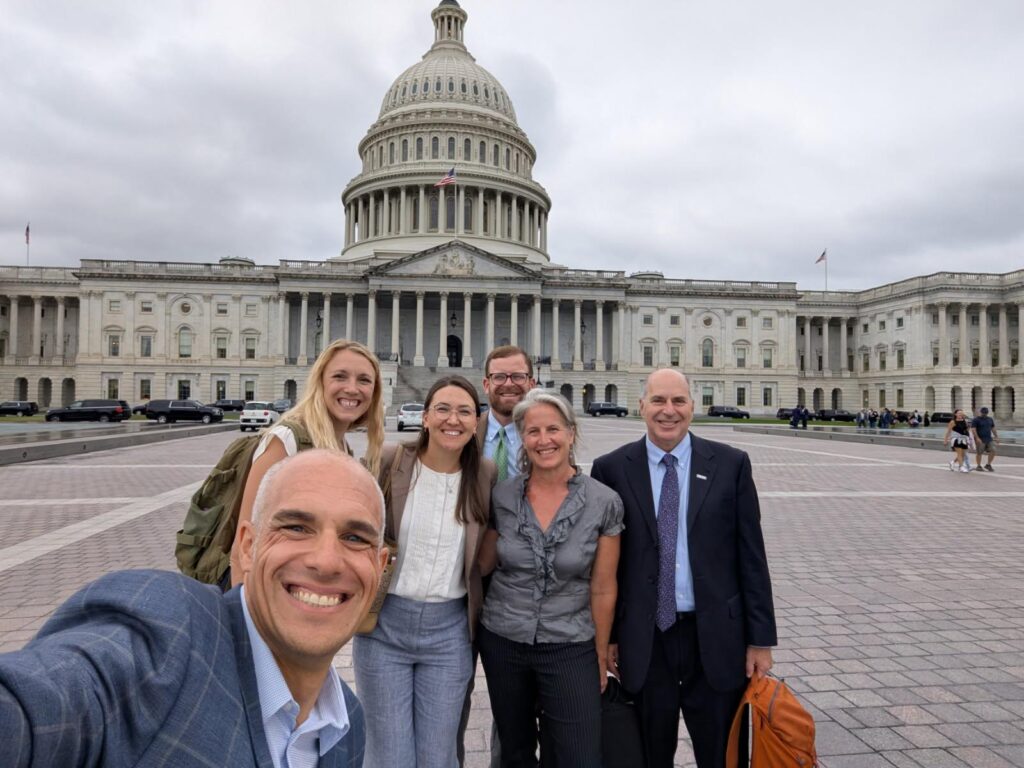The Hydropower Reform Coalition (HRC) has been advocating since the early 1990s for improved conditions in waters affected by hydroelectric projects. HRC advocacy has increased streamflows and made flow information public, achieved new and improved river access, and supported local communities where hydropower dams and other components of infrastructure are located. The California Sportfishing Protection Alliance has been a member of the HRC’s steering committee since 2009.
Guided by a steering committee of 12 organizations, HRC represents 160 member organizations throughout the nation. HRC achieves its objectives by engaging in the Federal Energy Regulatory Commission’s (FERC’s) hydropower relicensing, license implementation, and decommissioning processes. HRC also educates interested parties and informs decision-makers about regional priorities, project status, and the importance of restoring river ecosystems.

Keiko Mertz, Policy Director of Friends of the River (left) and Angelina Cook, Restoration Associate of CSPA (right), in front of the office of U.S. Representative Jared Huffman (D, CA-02). Image: Keiko Mertz
At least once a year, HRC steering committee members gather in Washington, D.C. to advance opportunities for river restoration by discussing hydropower relicensing and policy priorities with legislative and agency staff. “Capitol Hill Week 2025” took place Sept. 9-13. Angelina Cook attended on behalf of CSPA.
In five days, Angelina visited 19 offices representing congressional districts from California, Oregon, and Washington state. She accompanied colleagues from American Rivers, American Whitewater, Friends of the River, and the South Yuba River Citizens League. Altogether, the HRC crew met with 38 offices, encouraging rational Federal action on aging infrastructure and end-of-life care for dams.
The Federal Power Act requires FERC to license hydropower projects for 30 to50 years. When a project, including its dams and other works, undergoes relicensing, FERC requires the license holder to study and analyze the effects of the project. State and federal resource agencies and Tribes have designated authorities to make recommendations for conditions in the new license to protect public and Tribal lands and resources. In some cases, those conditions are mandatory. Different agencies also establish license conditions so that the new license is compliant with the Clean Water Act and the Endangered Species Act.
FERC’s processes for hydropower relicensing undoubtedly contain opportunities for improvement. However, the licensing process offers one of the most accessible and participatory opportunities available to improve the conditions for the nation’s rivers and fish.

Members of the Hydropower Reform Coalition visit the U.S. House of Representatives’ Energy and Commerce Committee office in September 2025. From left to right: Mark Zakutansky, Conservation Policy Director of Appalachian Mountain Club, Keiko Mertz, Policy Director of Friends of the River, Thomas O’Keefe, Director of Policy & Science at American Whitewater, Sterling Forbes, Associate Director of Hydropower Reform at American Rivers, Katie Schmidt, Associate Director of American Rivers National Dam Removal Program, Aaron Zettler-Mann, Executive Director of South Yuba River Citizens League, Bob Nasdor, Northeast Stewardship Director of American Whitewater, Clara Cargile, Professional Staff Member, U.S. House of Representatives Energy & Commerce Committee, and Angelina Cook, Restoration Associate for CSPA. Image: Jaime Sigaran
Despite the fact that the licensing process generally works, in the past decade, legislators from both the Democrat and Republican parties have proposed measures to expedite this process. They use terms like “streamline” to describe cuts and changes that would sacrifice environmental protections. Examples include the “Standardizing Permitting and Expediting Economic Development” (SPEED) Act and the “Promoting Efficient Review for Modern Infrastructure Today” (PERMIT) Act, both bills proposed in 2025. These two acts would weaken the rights of states and agencies to govern natural resources on behalf of Tribes, the public interest, wildlife, and future generations. In the face of these efforts, river communities’ abilities to organize through grassroots coalitions such as HRC becomes increasingly important.
One of the policy positions HRC sought to advance this September was to support better coordination between Federal agencies in carrying out their responsibilities under various laws, like the Clean Water Act, the Endangered Species Act, and the Federal Power Act. The idea was to accomplish this without weakening the laws. It is the interest of those who use and love rivers to complete relicensing on time.

Members of the Hydropower Reform Coalition in front of the Capitol Building visit Washington, D.C. in September 2025. From left to right: Aaron Zettler-Mann, Executive Director of South Yuba River Citizens League, Katie Schmidt, Associate Director of American Rivers National Dam Removal Program, Keiko Mertz, Policy Director of Friends of the River, Mark Zakutansky, Conservation Policy Director of Appalachian Mountain Club, Angelina Cook, Restoration Associate of CSPA, and Bob Nasdor, Northeast Stewardship Director of American Whitewater. Image: Arron Zettler-Mann
One thing to note that is the vast majority of dams in America were built before 1970. This means they were constructed before most modern environmental laws were in existence. Many hydropower projects have never had a FERC license that considers environmental protection. New license conditions are likely to better protect aquatics, recreation, and local economies.
HRC is also seeking to advance the goal of better defining the license surrender process. The process for decommissioning projects that no longer make sense is much less defined than the process to issue new FERC licenses. The license surrender process includes very little required opportunities for the public to influence what happens when a hydropower project ceases operation.
During the next few years, HRC expects a glut of hydropower relicensing applications. HRC will work to unblock access to habitat for anadromous fish, like salmon and steelhead, and improve the volume and timing of streamflows. HRC members will share data, debate issues, and combine resources. They will facilitate more efficient policy implementation, jurisdictional coordination, and informed civic engagement.
Ultimately, the HRC aims to enhance the long-term ecological viability of watersheds. It also seeks to increase economic vitality in the rural communities most affected by America’s extensive inventory and checkered history of hydropower dams. Visit www.hydropowerreform.org to learn more.
